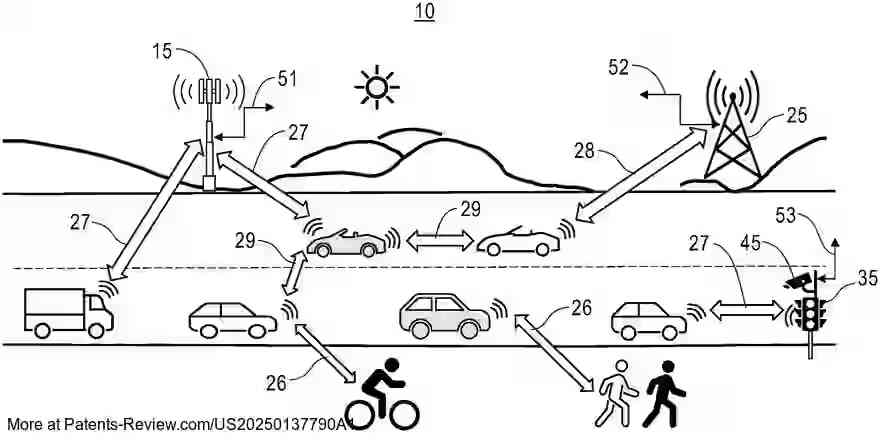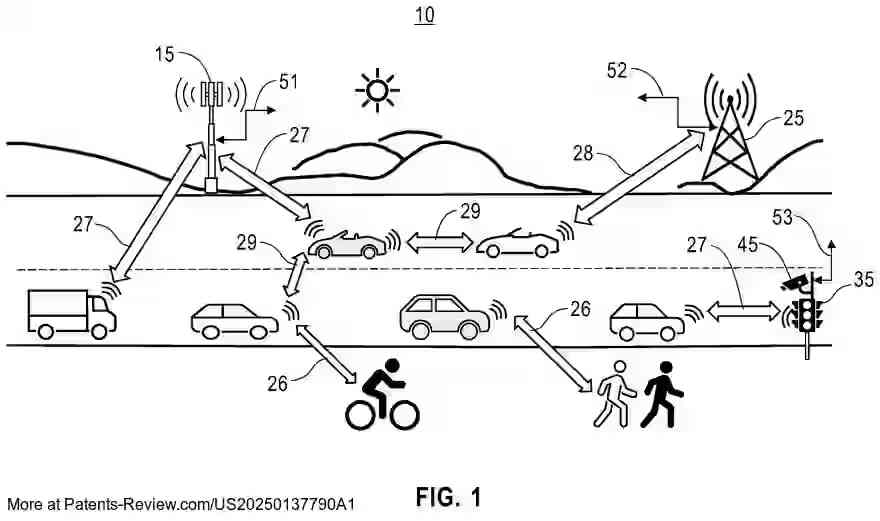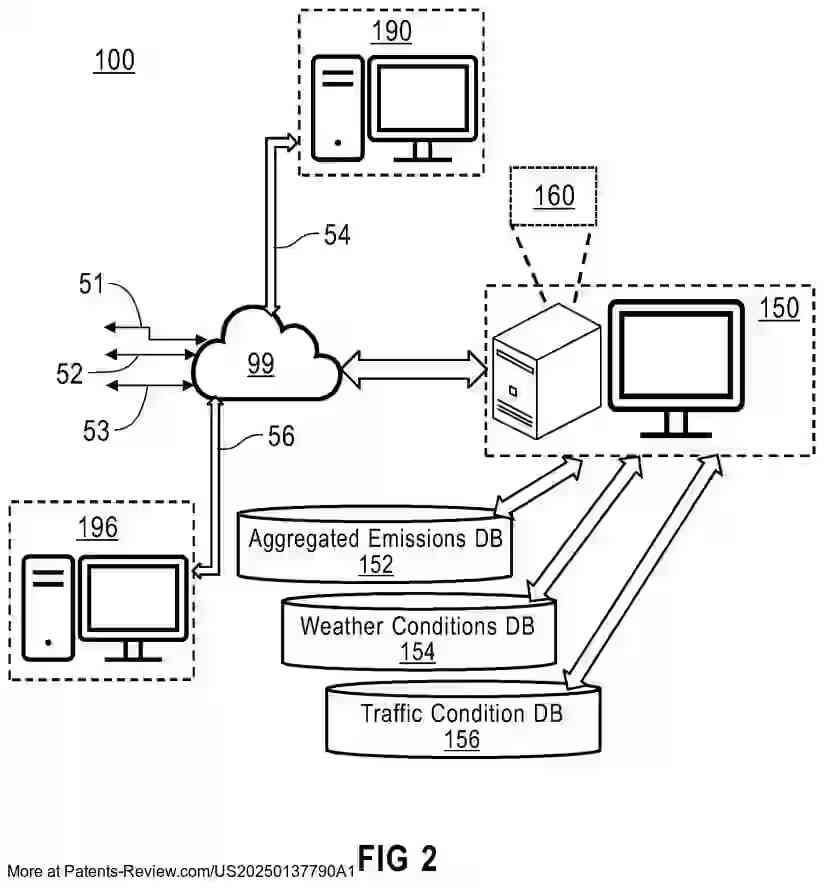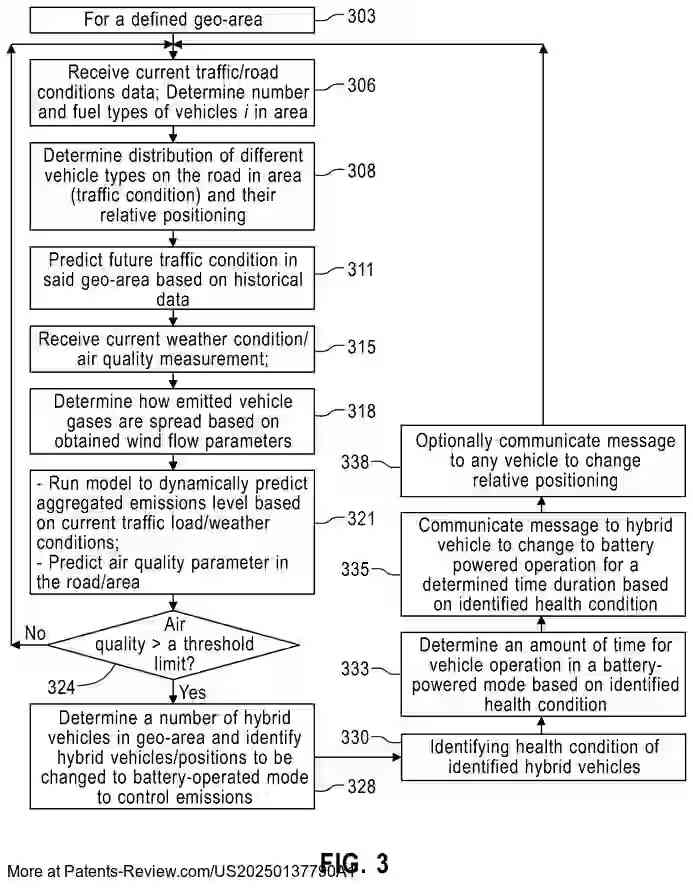DYNAMIC CONTROL OF AIR QUALITY IN A GEO-FENCING AREA
US20250137790
2025-05-01
Physics
G01C21/3469
Inventors:
Applicant:
Drawings (4 of 7)




Smart overview of the Invention
The patent application introduces a Vehicle-to-Everything (V2X) computing system aimed at managing air quality by dynamically controlling vehicle emissions. It achieves this by switching hybrid vehicles from fuel to battery mode within specific geo-fenced areas. The system calculates allowable emissions in real-time, considering environmental parameters such as wind direction and speed, and uses historical data to predict emissions. This approach helps maintain air quality standards by optimizing the distribution of battery and fuel-powered vehicles.
Background
Hybrid vehicles, which combine fossil fuel and electric power, are central to this system. These vehicles can switch between power sources to optimize efficiency and reduce emissions. Given the increasing number of vehicles on the road, maintaining air quality within set norms is challenging. The system addresses this by using V2X technology to adapt vehicle operations dynamically, ensuring emissions do not exceed acceptable thresholds.
System and Methodology
The system identifies pollution levels in specific areas and determines how many vehicles should operate in battery mode versus fuel mode to maintain air quality. It utilizes real-time V2X communication to compute pollution levels and decide the power mode for vehicles. The system involves a hardware processor that detects vehicle entry into geo-fenced areas, receives environmental data, and calculates allowable emissions. It then instructs hybrid vehicles to switch modes accordingly.
Implementation Details
The V2X system infrastructure enables real-time communication between vehicles and roadside units (RSUs). It supports various communication types like Vehicle-to-Infrastructure (V2I) and Vehicle-to-Vehicle (V2V), allowing for data exchange on vehicle speed, location, and road conditions. This data helps create a 360-degree awareness among vehicles, facilitating dynamic emission control.
Communication Infrastructure
The system employs V2N (Vehicle-to-Network) communication for broader connectivity, linking vehicles with data centers and other networked devices via mobile telecommunication protocols. This connectivity supports real-time updates and improved driving directions based on traffic conditions, further enhancing the system's ability to manage air quality efficiently within geo-fenced areas.